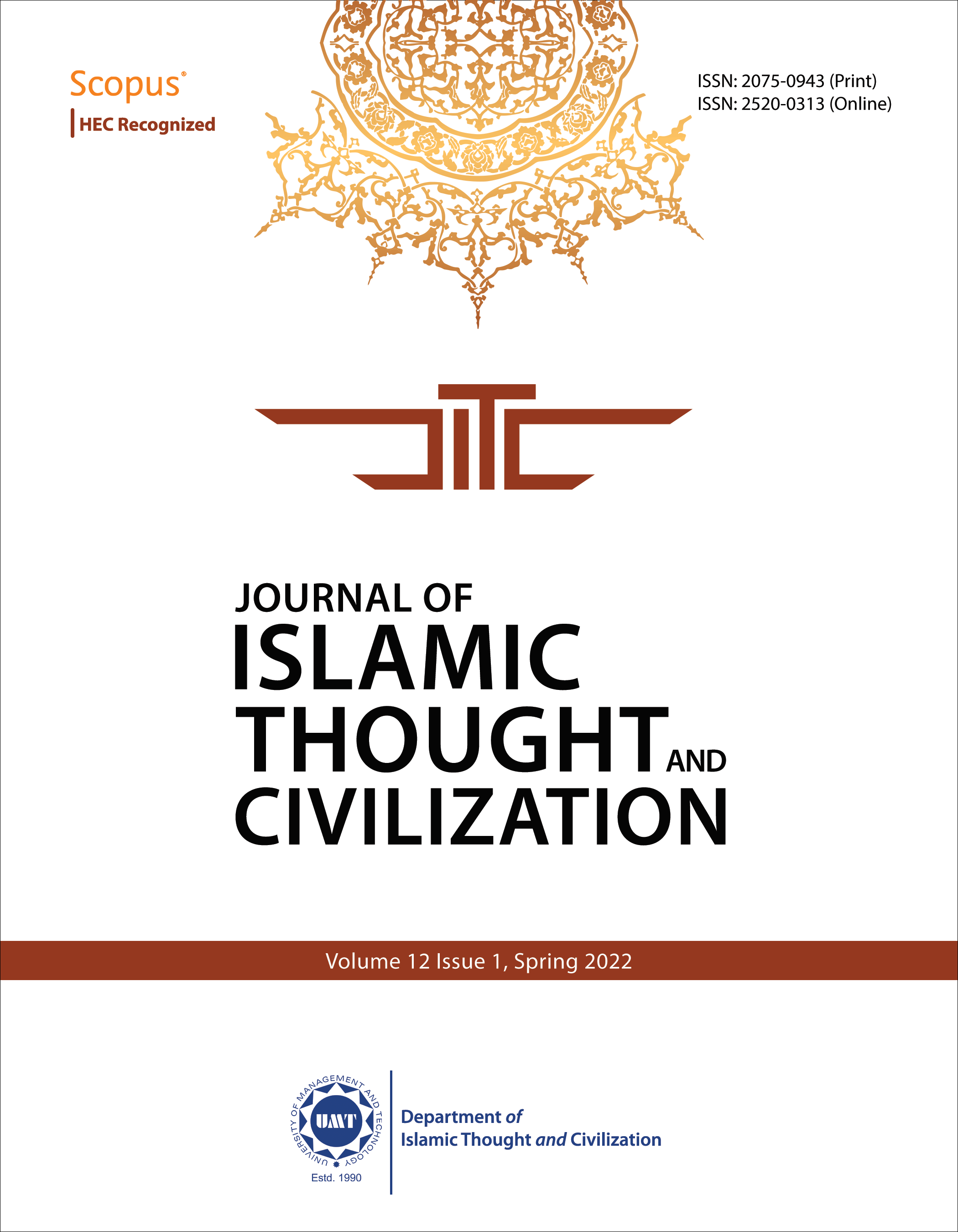Structural Positioning of Mosque in the Development Plan of the Federal Capital of Pakistan
Abstract
 Abstract Views: 166
Abstract Views: 166
The aim of this research is to create an understanding regarding the relationship between Grand Mosques in urban structure of the Islamic Communities. For this study, Faysal Mosque, Grand Mosque of the Federal Capital of Pakistan, Islamabad, has been selected as a primary site of inquiry for investigating function and purpose of a mosque in an Islamic community. Using a conceptual framework developed using Michel Foucault’s framework for Enunciative Modalities and design analysis of key examples of major grand mosques in the Islamic history, the paper highlights that a grand mosque holds a vital position in the historic Islamic cities. Its placement at an anchoring point generally connects it with the urban fabric of the city. Historically, the vital positioning in the mosque is also associated with the diverse function that generally work as a school, a treasury, a lecture hall, a guest room, and place of worship. However, with the evolution of the Muslim societies the mosque’s function was confined to a religious place and a school as the rest of the function were shifted into more specialized buildings. Through the assessment of architectural, political, and sociological impacts, however, it has been concluded that whether modern or traditional, the Islamic city was never conceptualized without the grand mosque.
Keywords: Mosque Architecture, Faysal Mosque, Modernity, Symbolism
Downloads
References
Abu-Lughod, Janet L. “The Islamic City--Historic Myth, Islamic Essence, and Contemporary Relevance.” International Journal of Middle East Studies 19, no. 2 (1987): 155-76. DOI: https://doi.org/10.1017/S0020743800031822
Daechsel, Markus. Islamabad and the Politics of International Development in Pakistan. Cambridge University Press, 2015. DOI: https://doi.org/10.1017/CBO9781107298033
Foucault, Michel. The Archaeology of Knowledge: And the Discourse on Language. 3988th edition. New York, NY: Vintage, 1982.
Grabar, Oleg. “Symbols and Signs in Islamic Architecture.” In Architecture as Symbol and Self-Identity, Philadelphia: Aga Khan Award for Architecture, 1980.
Hattstein, Markus., and Peter Delius. Islam: Art and Architecture. Könemann, 2004.
Hillenbrand, Robert. Islamic Art and Architecture. Thames and Hudson, 1999.
Ibn-e-Mājah. “The Mosques and the Congregations.” In Sunan Ibn-e-Majah. Dar Al Kutub Al Ilmiyah, 2008.
Al-Jasmi, Abdullah., and Michael H. Mitias. “Does an Islamic Architecture Exist?” Revista Portuguesa de Filosofia 60, no. 1 (2004): 197-214.
Khan, K. A. “The Roots of Islamic Education.” In The Mosque Schools in Pakistan: An Experiment in Integrating Nonformal and Formal Education, 12-13. ПЕР Occasional Papers No. 59. France: Unesco: International Institute for Educational Planning, 1981. https://unesdoc.unesco.org/ark:/48223/pf0000070267/PDF/70267eng.pdf.multi.
Al-Keranwi, Alean. “The Role of the Mosque and Its Relevance to Social Work.” International Social Work 59, no. 3 (April 30, 2016): 359-67. DOI: https://doi.org/10.1177/0020872815626997
Linsdstrom, S., and B Ostnas. “Report on Greater Karachi Plan.” Stockholm, Sweden: Merz Rendel Vatten, April 1952.
Mahsud, Ahmed Zaib K. “Representing the State: Symbol and Ideology in the Master Plan of Islamabad.” In the Politics of Making, 61–74. Routledge, 2013.
Marçais, William. “L’islamisme et la vie urbaine.” Comptes rendus des séances de l’Académie des Inscriptions et Belles-Lettres 72, no. 1 (1928): 86-100. https://doi.org/10.3406/crai.1928.75567. DOI: https://doi.org/10.3406/crai.1928.75567
Omer, Spahic. “Towards Understanding Islamic Architecture.” Islamic Studies 47, no. 4 (2008): 483-510.
Rabbat, Nasser. “What Is Islamic Architecture?” In Treasures of the Aga Khan Museum Architecture in Islamic Arts. Geneva, Switzerland: Aga Khan Trust for Culture, 2012.
Ranjha, Asif Naveed., and Yasmin Roofi. “Mosque as Community Welfare Centre.” Research Journal Ulum-e-Islamia 21 (2018).
Al Sayyad, Nezar. “The Study of Islamic Urbanism: An Historiographic Essay.” Built Environment (1978) 22, no. 2 (1996): 91-97.
Copyright (c) 2022 Mansoor Ahmed, Shama Anbreen

This work is licensed under a Creative Commons Attribution 4.0 International License.

This work is licensed under a Creative Commons Attribution 4.0 International License. Authors retain copyright and grant the journal right of first publication with the work simultaneously licensed under a Creative Commons Attribution (CC-BY) 4.0 License that allows others to share the work with an acknowledgement of the work’s authorship and initial publication in this journal.








